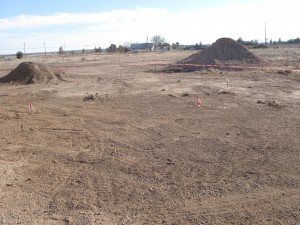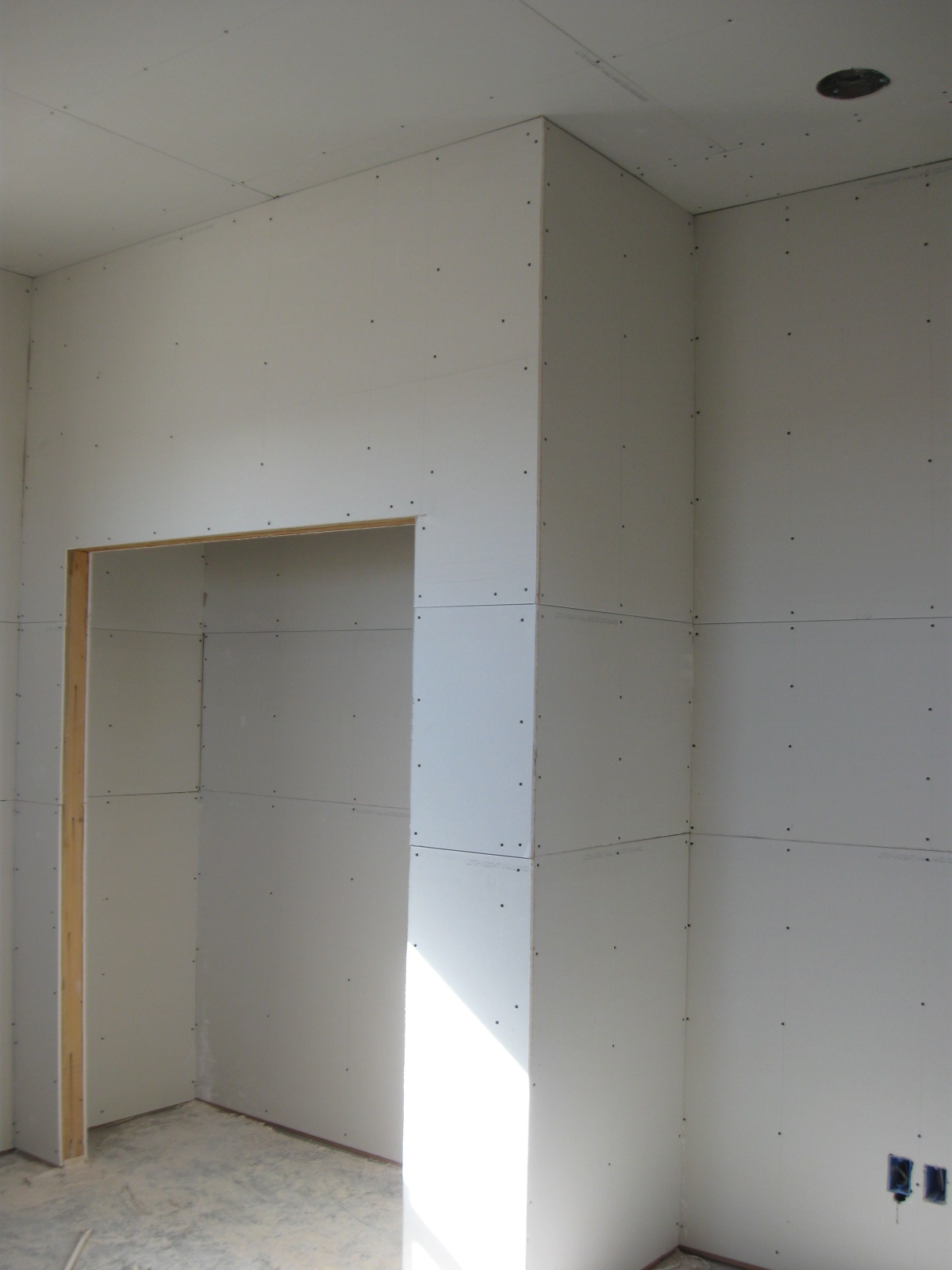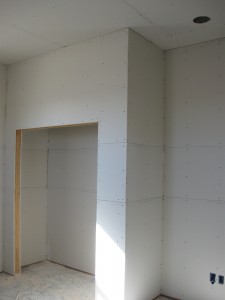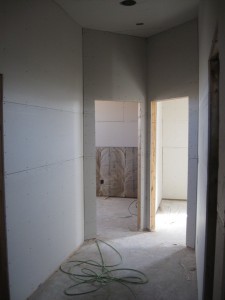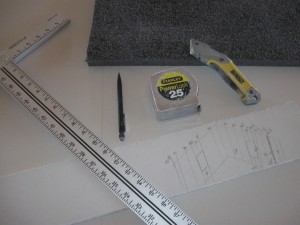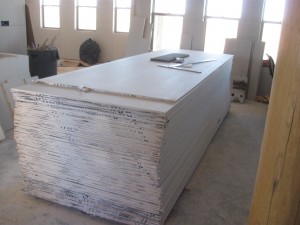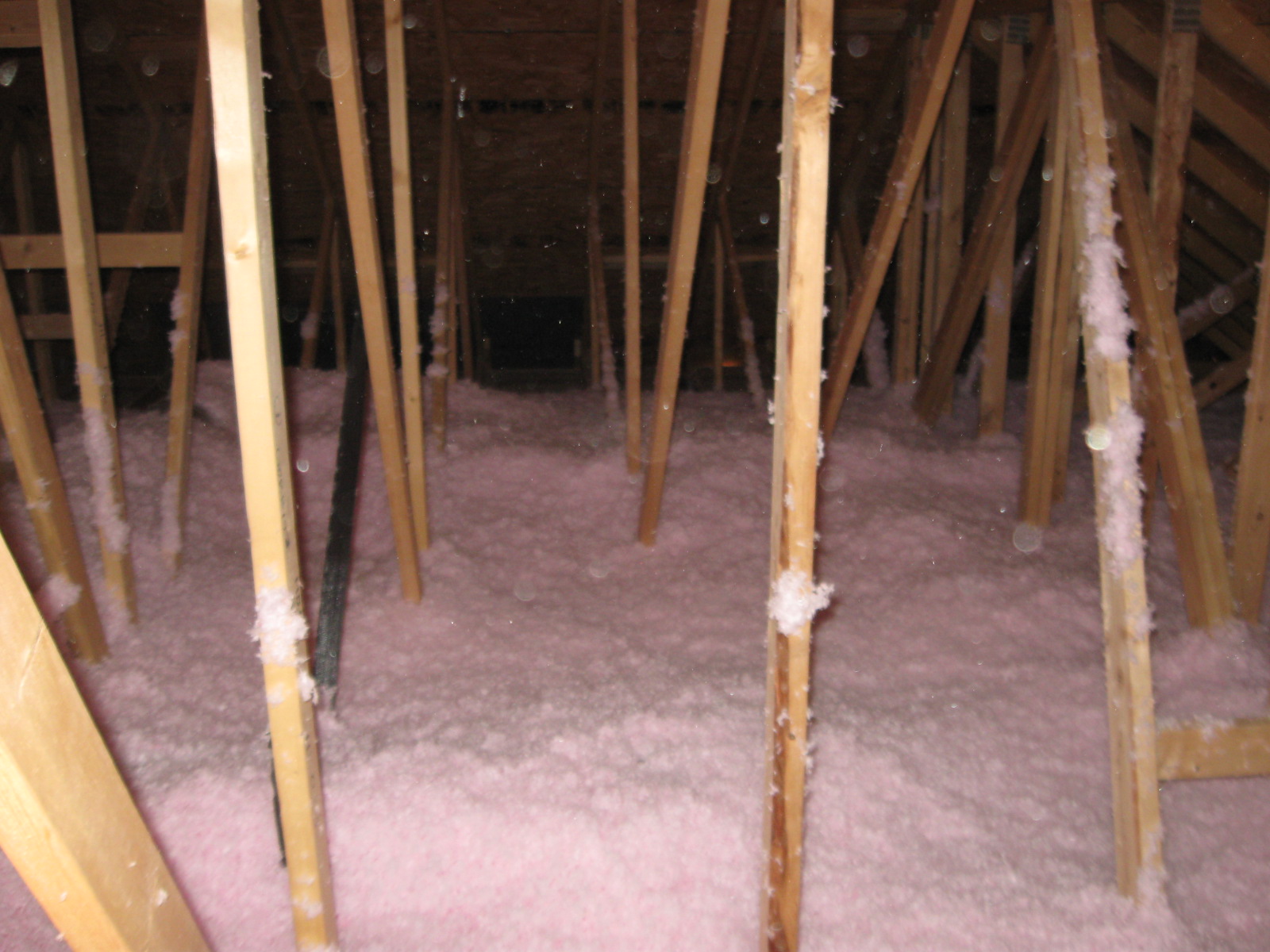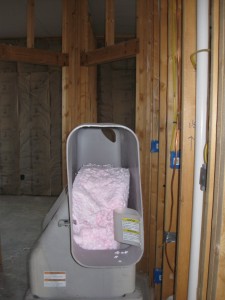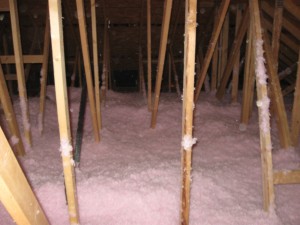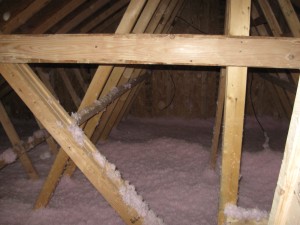So… even though the house progress isn’t to the point that we can concentrate on the outside, based on the urgings of a very good friend, we decided to go ahead and start the orchard. Peaceful Valley has a special going on right now on their bare root fruit trees — 10 of them delivered for only $199. Here’s what we ordered:
1 Honey Crisp Apple Tree (Semi-dwarf)
1 Gala Apple Tree (Semi-dwarf) (the gala is a good pollinator for some of the other apple trees that are not self-fertile)
1 Cox`s Orange Pippin Apple Tree (Semi-dwarf)
1 Gravenstein Red Apple Tree (Semi-dwarf)
1 Montmorency Cherry Tree (Standard) (wonderful pie cherries)
1 Craig’s Crimson® Cherry Tree (Dwarf)
1 Bartlett Pear Tree, European Type (Semi-dwarf) (pears do very well in our climate — the bartlett is a good pollinator for the D’Anjou)
1 Red D’Anjou Pear Tree, European Type (Semi-dwarf)
1 Harcot Apricot Tree (Semi-dwarf)
1 Late Santa Rosa Plum Tree, Japanese Type (Semi-dwarf)
We took some time yesterday to mark out the planned planting locations for the 10 trees when they arrive. We are placing them approximately 12′ apart in a zigzag pattern to maximize efficiency. Most of the trees are semi-dwarf, so this should be adequate. The full-size Montmorency needs a bit more, so we’ll place it on the outside north-most spot. We’ll put in the watering system pipes and rig it so we can water on a timer until the entire irrigation system is finished after the house interior is done. We are in zone 6-7, so we made sure all of the trees do well in zone 6 to ensure we don’t lose them in a year with an especially cold winter.
Photos of the staked out orchard: